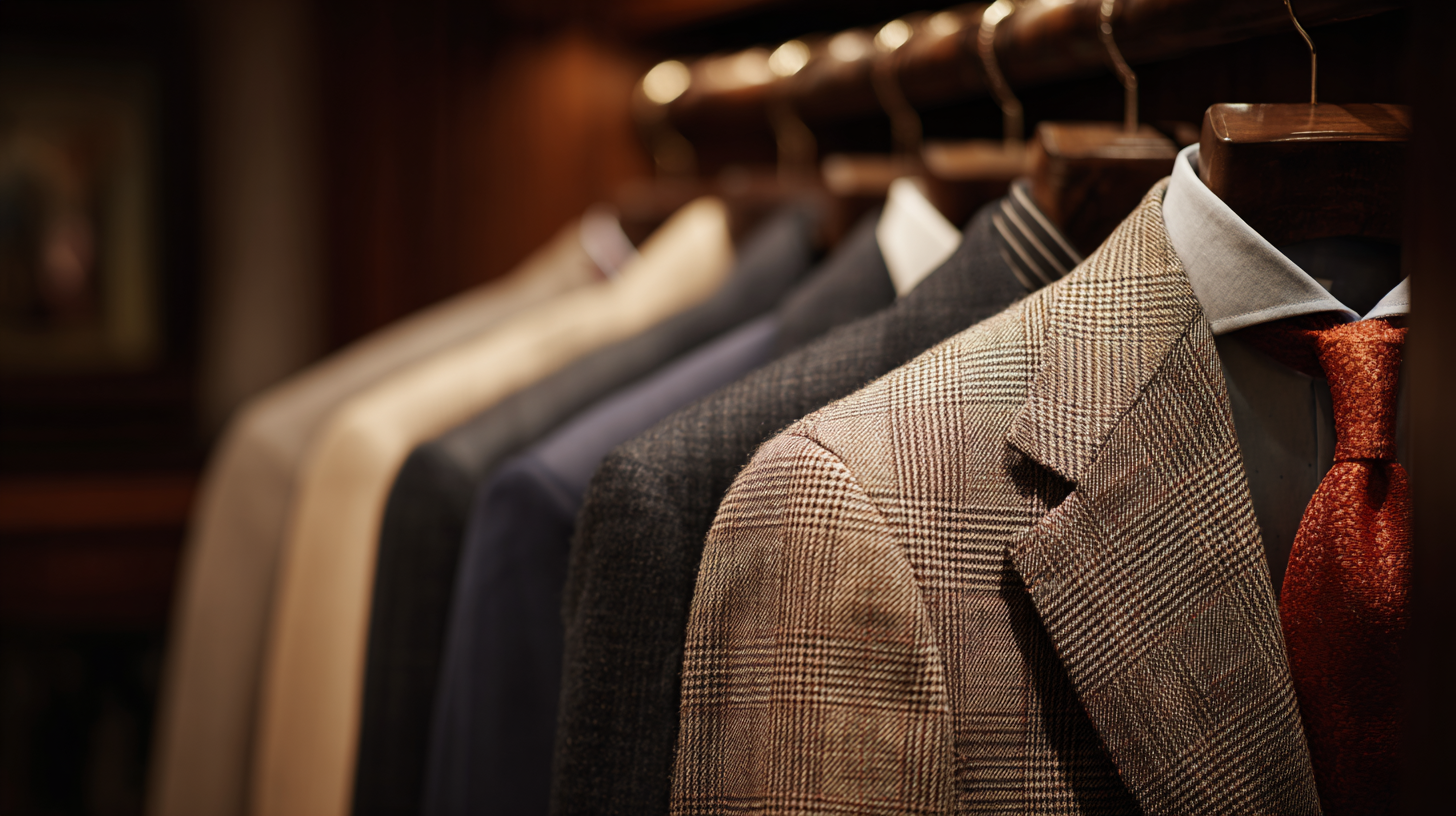
In recent years, the global men's jackets market has witnessed remarkable growth, driven by a surge in demand for high-quality craftsmanship that merges style with functionality. According to a report by Grand View Research, the men's outerwear market is expected to reach USD 60 billion by 2025, with a significant portion attributed to well-constructed jackets that cater to diverse consumer preferences. This trend highlights a shift towards premium materials and fine tailoring, which are becoming essential considerations for fashion-conscious buyers. As Chinese craftsmanship continues to gain recognition on the international stage, it not only elevates the quality standards of men's jackets but also responds to the increasing expectation for durability and design innovation in this competitive market.

By exploring various types of products and their suitability for different occasions, this blog will delve into how craftsmanship is redefining the landscape of men's jackets, ultimately setting new benchmarks for global quality standards.
The production of men's jackets has transcended local craftsmanship to embrace global quality standards, particularly in China. This evolution is not just about meeting specifications; it's about a commitment to excellence that aligns with international expectations.
Global quality standards encompass a wide range of criteria, including material durability, design innovation, and manufacturing precision. By adhering to these benchmarks, Chinese manufacturers have positioned their products as competitive alternatives in the global marketplace.
Moreover, understanding these standards requires a multifaceted approach. It involves not just compliance with regulations but also a deep appreciation for consumer preferences across different cultures. Chinese craftspeople are increasingly integrating advanced technology and traditional techniques, ensuring that each jacket not only looks good but also meets the performance metrics expected by international consumers.
The focus on quality assurance processes, from sourcing the finest materials to implementing rigorous testing protocols, showcases the dedication to elevating men's jackets to a level that resonates with a global audience. This commitment reinforces the notion that Chinese craftsmanship is not just about production; it is about creating a legacy of quality that rivals the best in the world.
The resurgence of traditional Chinese craftsmanship has positioned the country's men’s jacket production on the global stage, elevating it to new quality standards. Key elements of this traditional craftsmanship include meticulous attention to detail, the use of high-quality materials, and time-honored techniques that have been refined over centuries. According to a report by Statista, the global outerwear market is projected to reach $208 billion by 2025, indicating a rising demand for quality apparel. This presents an opportunity for Chinese craftsmen to showcase their unique skills, blending modern design with traditional methods.

One notable aspect of traditional Chinese jacket making is the focus on fabric selection. High-grade silk, cotton, and wool are often utilized, ensuring not only durability but also a luxurious feel. In fact, a recent market research report by Fortune Business Insights highlights that 73% of buyers prioritize fabric quality in their purchasing decisions. Furthermore, the intricate stitching and tailored fits often seen in Chinese jackets reflect a dedication to craftsmanship that appeals to a global audience, merging functionality with elegance. As the industry evolves, these key elements of traditional craftsmanship will continue to play a pivotal role in defining the future of men’s jackets worldwide.
In recent years, the men's fashion industry has seen significant transformations driven by technological advancements and evolving consumer demands. According to market projections, the global bespoke clothing market size is expected to expand from $5.99 billion in 2025 to a staggering $124.55 billion by 2033, reflecting a robust compound annual growth rate of 9.56%. This growth highlights how technology is not merely an accessory to traditional craftsmanship but rather an integral part of the industry’s evolution.
The integration of new materials and innovative technologies into garment production has allowed brands to elevate their offerings to meet global quality standards. As the demand for sustainable and custom products rises, fashion brands are exploring the potential of high-tech textiles and manufacturing processes. Despite the trend towards eco-friendly materials, the market remains niche, indicating a burgeoning yet competitive landscape. In addition, the emergence of key players in the high-end customization sector demonstrates that a fusion of craftsmanship and cutting-edge technology can lead to remarkable industry advancements, setting new benchmarks for quality and design.
The trend towards sustainability in men’s jacket production is gaining momentum, reflecting shifting consumer expectations and increasing environmental awareness. By 2025, the sustainable clothing market is projected to see substantial growth, rising from $3.9 billion to $9.4 billion by 2034. This evolution in consumer demand is prompting brands to invest in eco-friendly materials and innovative fabric technologies, which not only enhance product quality but also align with global sustainability goals.
To thrive in this changing landscape, brands should focus on integrating sustainable practices throughout their supply chains. Here are some tips for achieving this:
- **Embrace Fabric Innovations**: Stay updated on the latest sustainable fabrics, such as recycled polyester or organic cotton. These materials minimize environmental impact while offering high performance and durability.
- **Adopt Transparent Sourcing**: Consumers increasingly want to know where their clothing comes from. Ensuring transparency in sourcing and production processes can help build trust and enhance brand loyalty.
- **Leverage Data-Driven Insights**: Utilize fashion forecasting and data analytics to identify consumer preferences and optimize inventory management. This approach can lead to reduced waste and more sustainable production practices.
By prioritizing these strategies, men’s jacket manufacturers can elevate their products to meet global sustainability standards while appealing to conscientious consumers.
The global market for high-quality men's jackets has witnessed significant growth in recent years, spurred by a surge in consumer demand for both style and functionality. As lifestyles evolve and the emphasis on personal appearance intensifies, men are increasingly investing in jackets that not only meet their fashion sensibilities but also reflect durability and craftsmanship. Manufacturers, particularly in China, are stepping up their game, adopting advanced techniques and materials to produce jackets that can compete on a global scale.

When selecting a high-quality men's jacket, it’s essential to consider a few key tips. First, pay attention to the fabric - natural fibers like wool or cotton often offer better breathability and comfort compared to synthetic options. Additionally, examine the stitching and finishes; finely crafted garments typically feature neat, even seams, indicating a higher level of quality. Lastly, think about versatility; choosing a jacket that can transition seamlessly from casual to formal settings will maximize your investment.
The growing demand for premium jackets highlights a greater appreciation for the art of craftsmanship. As Chinese manufacturers continue to elevate their standards, the market is likely to see an influx of innovative designs that not only cater to consumer preferences but also raise the bar for quality in men's fashion worldwide.
